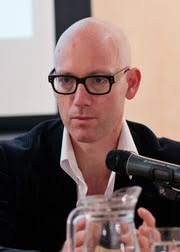You have /5 articles left.
Sign up for a free account or log in.

University of Sydney
The Institution: University of Sydney, Australia
 The Problem: Dirk Moses, professor of modern history, continued to face declining attendance in his face-to-face global culture and society course.
The Problem: Dirk Moses, professor of modern history, continued to face declining attendance in his face-to-face global culture and society course.
The Goal: Since the early 2000s, Moses said, he has been skeptical of the increasingly prominent “flipped classroom,” in which students consume at home materials typically conveyed in lecture, leaving more in-class time for robust discussion and interactivity. But last year he decided to try the flipped approach to see if it would entice learners to class, and he designed a study to measure the results. The central question of Moses’s recently published report on his flipped-class experiment is whether instructors should design their pedagogical approaches around students’ attention spans and individual needs, or if they should try to mold the students to the pedagogy the professors see as most valuable.
The Experiment: Moses wrote that he faced a particular challenge in attempting to flip a humanities course; the approach is often applied to STEM courses, because they lend themselves more easily to in-class quizzes and problem-solving exercises.
The global culture and society course typically consists of three graded assignments: one short essay, one long essay and one exam. For the flipped version, Moses assigned weekly 200-word analyses of readings, due one day after that week’s lecture, which focused on the questions that students had to answer in the analysis. The original course’s long essay became a take-home assignment, with a draft introduction and annotated bibliography due during the institution’s exam period at the end of the semester.
In class, Moses applied a “lectorial” format, focused on providing students with the academic skills necessary to complete the long essay and contextualize the material. “Teaching was to be interactive and dynamic; students were not to be passive recipients of knowledge: we would generate it together in a thrilling voyage of discovery,” Moses wrote.
Moses ended the semester with a self-designed survey, which secured responses from 114 students.
What Worked: More than half of students who responded supported Moses’s new approach -- some who didn’t complete the out-of-class assignments, he suspected, benefited from the refresher lecture he provided at the beginning of each lesson. “Clearly, students vary in preparation, confidence and ability,” Moses writes in the report. “With this heterogeneous student body -- including many international students -- there is no one-size-fits-all answer to the teaching-modality question.”
The lectorials started out as “raging successes” with fruitful discussions, Moses reports.
What Didn’t Work: The first sign of the model’s shortcomings arrived early on. The professor soon realized that students were not doing the preparatory reading before class. In response, he included a brief review of the reading before facilitating group work and discussions.
Attendance fell throughout the semester, just as it does in his face-to-face courses. What started as a class with 284 students in attendance dwindled to as few as 30 students by the last two weeks. (One caveat: at the University of Sydney, students can sign up for as many as three overlapping lecture sessions, which means attendance can be spotty, especially during busier times late in the semester.)
“I think the learning framework could be more successful if there was a little more variety,” wrote one student. Another said, “It worked for those with strong opinions and the confidence to speak out, however, this doesn’t typify the majority of the cohort unfortunately.”
Takeaways and Next Steps: To the instructor’s surprise, the results were decidedly mixed, as outlined in his report. Attendance didn’t improve, and some capable students said in an evaluation that they preferred the traditional model.
Fifty-four percent of the respondents agreed or strongly agreed that they preferred lectorial to traditional lecture, while 31 percent disagreed or strongly disagreed. Qualitative comments ranged widely, with some students offering unequivocal praise for the flipped approach, others dismissing it altogether, and a substantial contingent offering measured criticisms.
Though he doesn’t reach any definitive conclusions, Moses does argue in his report that thinking about flipped classrooms through a binary lens obscures the nuances within.
Moses likens his experiment to an “overegged” omelet, when students instead wanted lectures “sunny side up” -- a yolk made up of tutorial content, surrounded by the white of traditional lecturing.
Students in the top third of the class rankings tended to prefer the traditional lecture, Moses said. He speculates that lecture attendance was smaller among that group because high-achieving students want to hear from an experienced lecturer rather than spending much of their time engaging with “unprepared peers.”
The report returns frequently to the idea that students aren’t a monolith -- sophisticated pedagogical approaches aside, a varied cohort is likely to encompass a wide range of perspectives and backgrounds. In this case, some students found the focus on academic skills useful, while others sought a more “content-rich” approach. Moses now thinks the best offering combines elements of both, though he remains uncertain of the exact balance.
Moses’s next plan is to fold the tutorial into a three-hour face-to-face session, which will contain some group work as well as a more traditional lecture -- a partial flip. One or two other instructors will help Moses manage small-group work during the longer period, and the extra hour will give Moses more time to show substantial documentaries and feature films, he said.
While broad data on the prevalence or success of flipped classrooms aren’t widely available, research from Robert Talbert, associate professor of mathematics at Grand Valley State University, indicates that interest in the method is growing. According to Talbert’s research, more than 130 peer-reviewed articles on the subject were published in 2016, surpassing the total number published in the 15 years prior.








